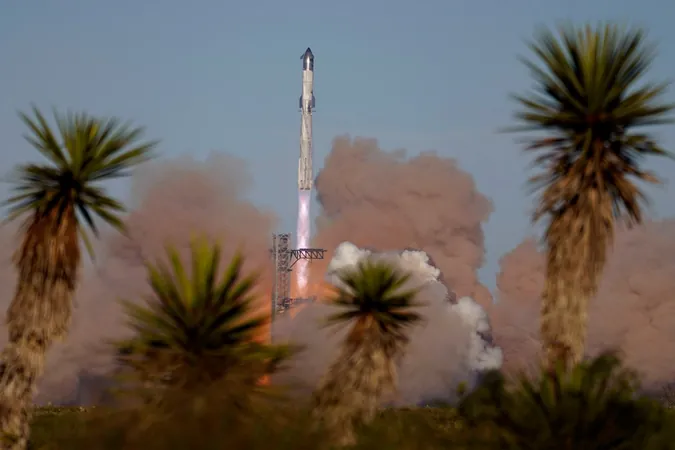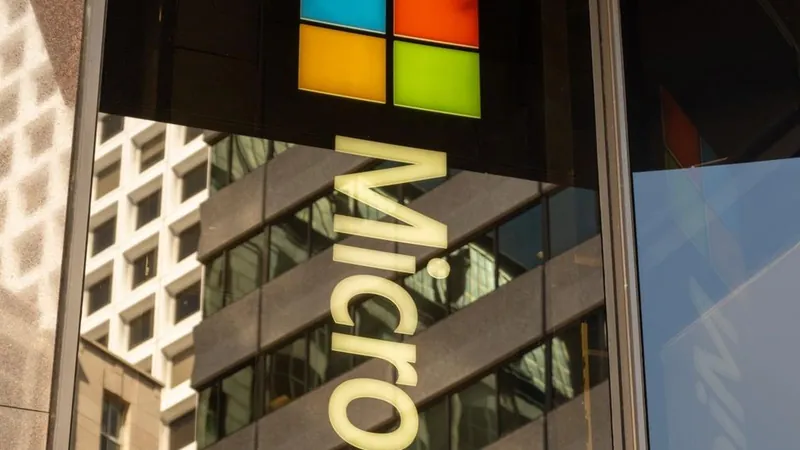
SpaceX Starship Prototype Experience Major Setback After Texas Launch
2025-01-16
Author: Liam
SpaceX Starship Prototype Experience Major Setback After Texas Launch
In a dramatic turn of events, a SpaceX Starship prototype encountered a severe failure in space just minutes after its launch from Texas on Thursday. This unfortunate incident not only set back Elon Musk's ambitious rocket program but also caused significant disruptions in air traffic over the Gulf of Mexico as several airlines had to alter their flight paths to avoid falling debris.
The prototype, equipped with its inaugural test payload of mock satellites, launched from SpaceX's South Texas facilities at 5:38 p.m. EST (2238 GMT). However, just eight minutes post-liftoff, mission control lost contact with the spacecraft, indicating a catastrophic anomaly with the upper stage. SpaceX Communications Manager Dan Huot confirmed the loss of contact, underscoring the critical nature of the failure.
Historically, SpaceX has experienced only a handful of such serious issues, and the last notable upper stage failure occurred in March of the previous year. However, it is rare that a mishap of this nature impacts civilian air traffic significantly. Flight records from the tracking website FlightRadar24 revealed that at least 20 commercial flights were forced to divert from their original trajectories or change their destinations entirely to ensure the safety of passengers.
In the lead-up to the launch, SpaceX highlighted that this new upper stage was two meters (6.56 feet) taller than its predecessors and featured essential upgrades intended to enhance performance. The Starship was slated to execute a controlled splashdown in the Indian Ocean approximately one hour after its launch, a plan that has now been thwarted.
In contrast, the towering Super Heavy booster, designed to propel the Starship into orbit, successfully returned to its launchpad about seven minutes after takeoff. This successful landing involved a strategic re-ignition of its Raptor engines as it engaged mechanical arms attached to the launch tower, showcasing SpaceX's ongoing advancements in reusable rocket technology.
As investigations into this incident commence, questions arise about the technical challenges the company faces as it works towards its goals of deep space exploration and eventual crewed missions to Mars. Will SpaceX overcome this setback, or is this the beginning of a more significant struggle with its flagship rocket program? Stay tuned for updates as the story develops.









 Brasil (PT)
Brasil (PT)
 Canada (EN)
Canada (EN)
 Chile (ES)
Chile (ES)
 Česko (CS)
Česko (CS)
 대한민국 (KO)
대한민국 (KO)
 España (ES)
España (ES)
 France (FR)
France (FR)
 Hong Kong (EN)
Hong Kong (EN)
 Italia (IT)
Italia (IT)
 日本 (JA)
日本 (JA)
 Magyarország (HU)
Magyarország (HU)
 Norge (NO)
Norge (NO)
 Polska (PL)
Polska (PL)
 Schweiz (DE)
Schweiz (DE)
 Singapore (EN)
Singapore (EN)
 Sverige (SV)
Sverige (SV)
 Suomi (FI)
Suomi (FI)
 Türkiye (TR)
Türkiye (TR)
 الإمارات العربية المتحدة (AR)
الإمارات العربية المتحدة (AR)